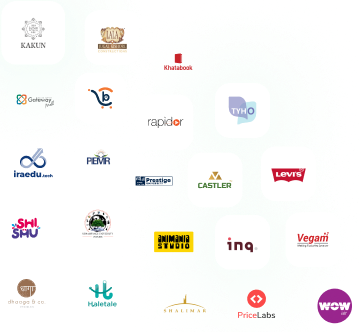Explaining why headless CMS is an important tool for current and future website development, its flexibility and scalability define the future success of the technology. With more and more companies having their pages on various social networks and other platforms, the requirements for systems that would allow managing digital content effectively, without significant investments in monolithic complex solutions, are becoming increasingly important. Headless Web development is being revolutionized through headless architecture by decoupling front and backend facilities that provide real-time content distribution to different forms of digital media such as websites and mobile applications.
The rise of headless CMS is transforming industries such as e-commerce, media, and enterprise applications. It offers business capabilities, that will enable it to adopt advanced technologies, enhance the speed of content delivery and ensure it has differentiated and integrated touch points. But let’s start with the basic concept and ask: What is headless CMS, and why are more and more organizations intensively implementing it?
Within this blog post, you will learn what headless CMS is explained, outline the benefits of headless CMS, and get insights into use cases of headless CMS in various industries, which prove how it contributes to improving the versatility of the frontend and determines the further evolution of web development.
What is Headless CMS? An In-Depth Explanation
Comparing a headless CMS with traditional platforms like WordPress, Joomla, and Drupal can help in understanding its functionality. These systems integrate both the backend (content management) and the frontend (presentation layer) within a single system. For instance, if you post a blog on WordPress, it manages both storing the content and showing it to website users.
On the other hand, a headless CMS divides the backend and frontend. This indicates that the management of content is separate from the way it is presented. The term "headless" is derived from separating the frontend , or the "head," from the back end. Information is kept in a backend system and transmitted through APIs to appear on various frontend platforms or frameworks.
Headless CMS explained is a CMS without the frontend or "head." The main emphasis is on managing and organizing content, providing flexibility in front-end development for websites, mobile apps, or smart devices. This divide allows developers more flexibility to utilize contemporary frameworks such as React, Vue.js, or Angular in order to construct distinct and captivating user interfaces.
Traditional CMS vs. Headless CMS
Prior to exploring the advantages and uses of a headless CMS, it is important to understand the distinction between a traditional CMS and a headless CMS.
Conventional CMS: Frontend and backend are interrelated in a way in the conventional configurations. This suggests that the platform through which manage your content also determines how it can be displayed. While this could be fine for relatively simple or static sites, it is not conducive to growth and flexibility, particularly for sites that need updates often or for sites that want to share content across various mediums.
Headless CMS: This is because Headless CMS distributes content through APIs breaking the CMS into a front-end and a back-end. This division is more flexible especially when dealing with content such as websites, mobile apps, digital kiosks and wearable devices.
Benefits of Headless CMS for Web Development
Now that we know what headless CMS is let’s see how it can be beneficial for web development. Given today’s tendencies and business development the content management system should be developed and capable of expanding in the future. Below are a few important benefits of headless CMS for contemporary websites:
Frontend Development offers the freedom to create
A key advantage of a headless CMS is the freedom it provides to developers. As the frontend and back end are distinct, developers have the flexibility to choose the most suitable tools and frameworks for crafting distinct user experiences. Regardless of their preference for Angular, React, Vue.js, or another contemporary JavaScript framework, individuals can use headless CMS to create dynamic and adaptable websites, free from the restrictions of traditional platforms.
Better Distribution of Content
A headless CMS delivers content via APIs, leading to a quicker and more efficient process. This results in faster loading times and a more seamless user experience. Information is retrieved dynamically from the backend, allowing users to quickly access content, enhancing SEO and user satisfaction. Additionally, this configuration enables both server-side (SSR) and client-side rendering (CSR), which aids in increasing the speed even more.
Providing Content to all Locations
In the modern era, content is not only viewed on websites but also via mobile apps, social media, IoT devices, as well as voice assistants and smartwatches. Using a headless CMS simplifies the process of distributing content to multiple channels from one backend, guaranteeing uniform content presentation regardless of the platform. This level of flexibility is revolutionary for companies requiring communication with customers on various platforms.
Scalable and flexible
As your company expands, your content requirements will also increase. Conventional CMS platforms frequently face challenges in scalability due to their integration of backend and frontend functionalities. headless web development, conversely, simplifies the process of scaling. If you're increasing your product range, entering new markets, or controlling an international website, a headless CMS can adjust to your expanding requirements while maintaining performance and user experience.
Improved level of protection
A headless CMS adds an additional level of security by dividing the frontend and backend. The CMS is hidden behind APIs, making it more difficult for hackers to reach sensitive data. Companies have the option to include extra security protocols to safeguard their information, reducing the likelihood of cyber attacks and weaknesses that are frequently associated with conventional systems.
Future-Proofing Your Architecture
The ability to be ahead of trends is one of the biggest benefits of a headless CMS. Technologies like AR, VR, and voice interfaces are becoming prevalent today which businesses can easily incorporate into their organization without a lot of stress regarding their CMS again. By designing and implementing an application around a headless CMS, you have the opportunity to integrate new frontend frameworks into your website without affecting the backend, ensuring that your website is on par to deal with upcoming developments.
Key Use Cases of Headless CMS in E-commerce and Beyond
Preferences and adoption of headless CMS use cases are rising in many industries including e-commerce, media, and healthcare. However, e-commerce headless CMSs are characterized by their ability to deliver capabilities for flexibility and personalization for customer-focused content in the context of the Web
Headless Content Management System (CMS) in e-commerce
Customer satisfaction and loyalty are imperative in a rapidly growing sector such as e-commerce and the ability to deliver a fully integrated and personalized shopping experience to the consumer/materials is where materials can really set the standards. A headless CMS is a great tool to help businesses decentralize content from the frontend and create unique experiences. This is how a headless CMS can enhance e-commerce activities:
Custom User Experiences
By employing headless CMS it becomes possible for developers to create customer-specific shopping experiences. While retailers may provide basic content, product suggestions, and promotions that may be of interest to particular consumers, richer and more sophisticated data and technology can be used to more finely target consumers’ information needs and behavioral propensities.
Custom User Experiences
In the field of IM-Commerce, especially in the fast-growing sector of online retailing, fast product introduction, promotions, or campaigns can help reach faster times to market. A headless CMS accelerates the dissemination of content, so the companies may change their website on different channels without a full update.
Multi-Platform Consistency
Due to the growth of mobile commerce, consumers are performing a variety of activities through multiple devices and therefore have consistent experience. A headless CMS produces a consistent look across the customer journey since customers are served the same content no matter the device used; a smartphone, tablet, or a desk top.
Seamless Integration with Third-Party Tools
Smoothly incorporating third-party tools: As the case with most e-commerce businesses, they employ various third-party apps in analytics, CRM, and marketing automation. It needs to be mentioned that a headless CMS can be easily integrated into these instruments, which would enhance the flexibility and would also allow businesses to manage content as well as the important operations.
Media and Printing
The media and publishing sector is another important domain where headless CMS excels. Due to the increase in digital content, media companies require a system that can handle extensive amounts of content on different platforms. A headless CMS enables media companies to easily produce, oversee, and share content across various platforms like websites, apps, social media, and smart devices. This method simplifies content processes and guarantees that news or articles are released simultaneously on all platforms, keeping users informed instantly.
Health and Education services
Providing timely and precise information is essential in industries such as healthcare and education. A headless CMS allows healthcare providers to distribute updates on various digital platforms, guaranteeing patients and users receive uniform and trustworthy information. In the same way, schools and universities can use headless CMS to share courses, resources, and other content on different digital platforms like learning management systems, apps, and websites, guaranteeing broad and easy access.
How Headless CMS Enhances Frontend Flexibility
One of the primary benefits of a headless CMS is the flexibility that front-end development gets as a result. As shown, different from the conventional concepts of the CMS platforms that have a significant link between frontend and backend, the headless CMS development the freedom to display content in inventive, creative ways, without limitations.
Key Features of a Headless CMS Frontend
The potential for a headless CMS frontend is almost limitless, fueled by the imagination of developers. Below are a few notable characteristics:
API-First Approach
API-First Approach involves a headless CMS that provides content through APIs, allowing developers to easily access and showcase content on various devices and platforms. This method enables instant updates and flexible content distribution, creating a smooth user experience.
Decoupled Architecture
Decoupled Architecture can be a solution to update the frontend part independently of the content management part since it makes the frontend and backend work independently. This level of flexibility means that enhancements and updates to the user interface which would otherwise be brought to market less frequently can be made more frequently.
Support for Modern Frameworks
With the help of existing frameworks such as React, Angular, or Vue.js, developers can build UX that will engage users. Modern and particularly user-friendly websites and applications can be developed with the help of the latest technologies.
The Future of Headless CMS: What to Expect
The contour also demonstrated how to further front-end development by using headless CMS technology. Also, headless CMS stands out from conventional CMS platforms where the frontend and backend are intertwined, providing developers with a vast array of opportunities to display content unconventionally.
Key Features of a Headless CMS Frontend:
The potential for a headless CMS frontend is almost limitless, inspired by the innovation of developers. Below are a few notable characteristics:
API-First Strategy
A headless CMS provides content through APIs, allowing developers to easily fetch and showcase content on various devices and platforms. This method enables instant updates and interactive content delivery, offering a smooth user experience
Voice and Visual Search
Decoupled Architecture allows developers to update the frontend and backend independently, with changes to the frontend not impacting content management. This adaptability allows for more regular enhancements and quicker delivery of updates to the user interface.
Deeper Omnichannel Experiences:
Users should also be presented with modern frameworks such as React, Angular, Vue.js or any other framework to enhance the user experience. Technology enables the design of engaging and easy-to-navigate websites and applications to be developed.
Conclusion
Altogether, headless CMS is not just a trend or a buzzword – this term defines the further development of the web development process. It provides flexibility, scalability and performance by decoupling the frontend display of the content from the backend content management. With the growing adoption of digital initiatives particularly in the e-commerce space,benefits of headless CMS will be apparent into the future.
It has been seen that the core responsibility of managing and delivering content beyond websites, consistently across various devices, and personalized experiences for users and customized integrations makes headless CMS the preferred solution for modern websites. If you’re a developer that is seeking more autonomy in the frontend area or a business owner planning to scale and diversify, the future of headless web development is promising—and it has only just begun.
FAQs
1. What is a headless CMS and how is it different from traditional CMS?
A headless CMS separates the content backend from the frontend display, delivering content via APIs—unlike traditional CMS which links both tightly.
2. Why is headless CMS important for modern web development?
Headless CMS supports multi-platform content delivery, frontend flexibility, and fast performance, making it ideal for modern, scalable web experiences.
3. How does a headless CMS improve content delivery speed?
By delivering content through APIs, headless CMS reduces load time and supports real-time updates across websites, apps, and devices.
4. What industries benefit most from using headless CMS?
E-commerce, media, healthcare, and education benefit by enabling fast updates, multi-device delivery, and custom user experiences.
5. Is headless CMS secure?
Yes, headless CMS enhances security by decoupling frontend and backend, hiding the backend behind APIs and reducing attack surface.
The world’s First zero commission platform
Hire tech partners effortlessly
 If you're a non-tech founder looking for an agency or a tech founder looking for engineers.
If you're a non-tech founder looking for an agency or a tech founder looking for engineers. You can get your 5 best matches from 2800 in 5 mins, with 1000 data points tracked.
You can get your 5 best matches from 2800 in 5 mins, with 1000 data points tracked. Connect directly with no credit card needed!
Connect directly with no credit card needed!
You’re just a click away from the best talent.


